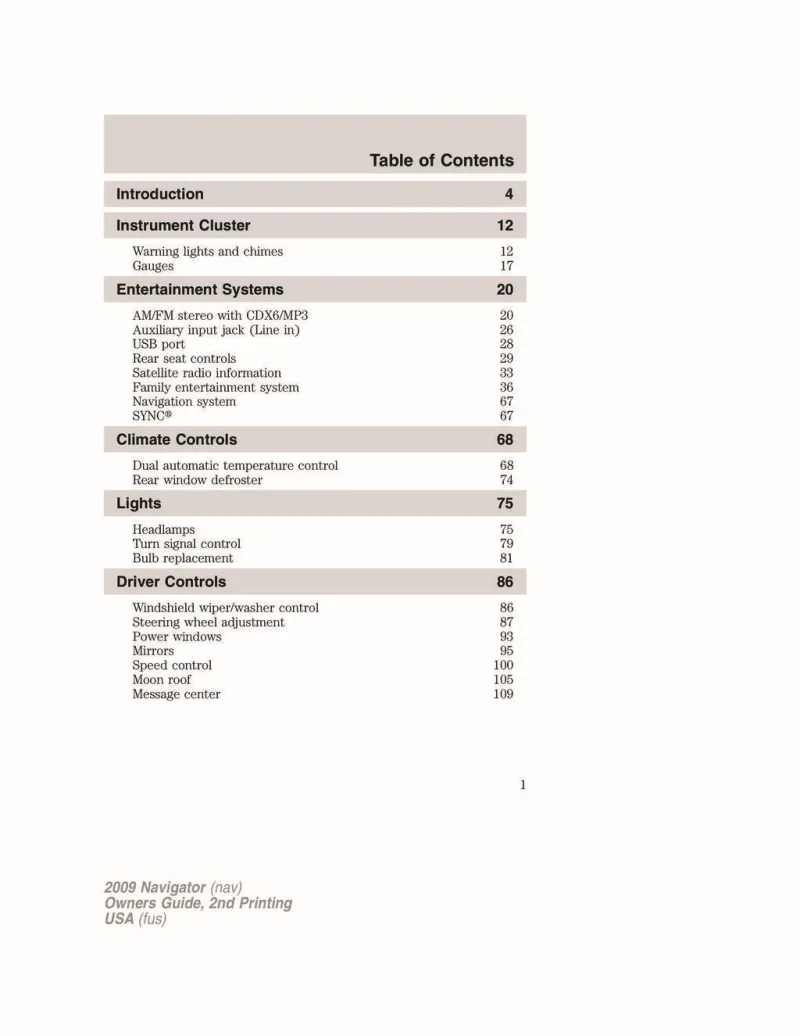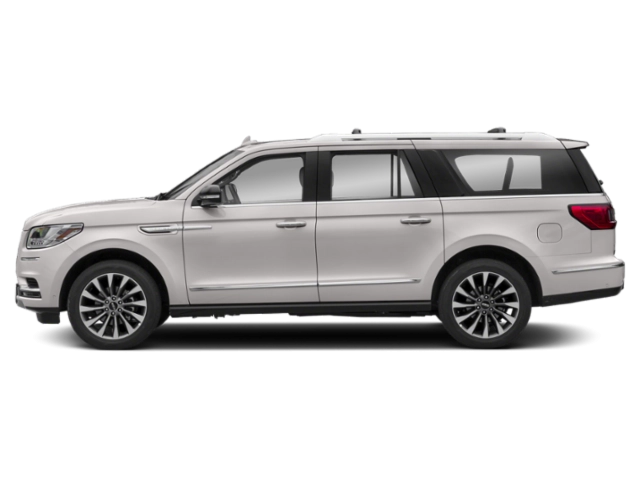2009 Lincoln Navigator Owner's Manual

Table of Contents
2009 Lincoln Navigator Overview
Introduction
The 2009 Lincoln Navigator stands as a beacon of luxury within the full-size SUV market, offering an impressive blend of refined aesthetics, spaciousness, and advanced technology. As a flagship vehicle from Lincoln, the Navigator is designed for those who crave the comfort and premium features associated with high-end driving experiences. With seating for up to eight passengers, it excels in both family outings and business ventures, making it a versatile choice for discerning buyers.
Powertrains
Under the hood, the 2009 Lincoln Navigator boasts a robust 5.4-liter V8 engine, delivering an authoritative 300 horsepower and 365 lb-ft of torque. This powerful engine is paired with a smooth six-speed automatic transmission, ensuring seamless gear shifts and optimal performance. The Navigator offers both rear-wheel drive and a sophisticated four-wheel drive option, allowing for dependable handling in various driving conditions, whether navigating city streets or venturing off the beaten path.
Trims
The Navigator is available in two trims: the base Navigator and the luxurious Navigator L. The latter extends the vehicle’s length, providing additional cargo space while retaining all essential features. Both trims come equipped with premium amenities, including leather upholstery, power-adjustable heated front seats, and advanced audio systems, elevating every journey to a first-class experience.
Features
Passengers of the 2009 Lincoln Navigator can enjoy a wide array of remarkable features, such as a premium sound system, DVD entertainment system, and the SYNC infotainment technology, which seamlessly integrates mobile devices and offers hands-free calling. Safety remains a priority with features like adaptive cruise control, blind spot monitoring, and a full suite of airbags, ensuring peace of mind for all occupants.
Owners Manual
The owner's manual for the 2009 Lincoln Navigator serves as an indispensable guide for maximizing the vehicle's features and understanding maintenance requirements. It provides insightful details about operating the various systems, troubleshooting common issues, and adhering to service schedules, ensuring that owners can enjoy their Navigator to its fullest potential.
User manual download
The Lincoln Navigator owner manual for the 2009 model year is to be found in PDF downloadable format on this page. The owner manual for the model year 2009 is free and in English, but the repair manuals are usually not easy to get and may cost more.
Manual Questions
Fill the form below and someone will help you!

